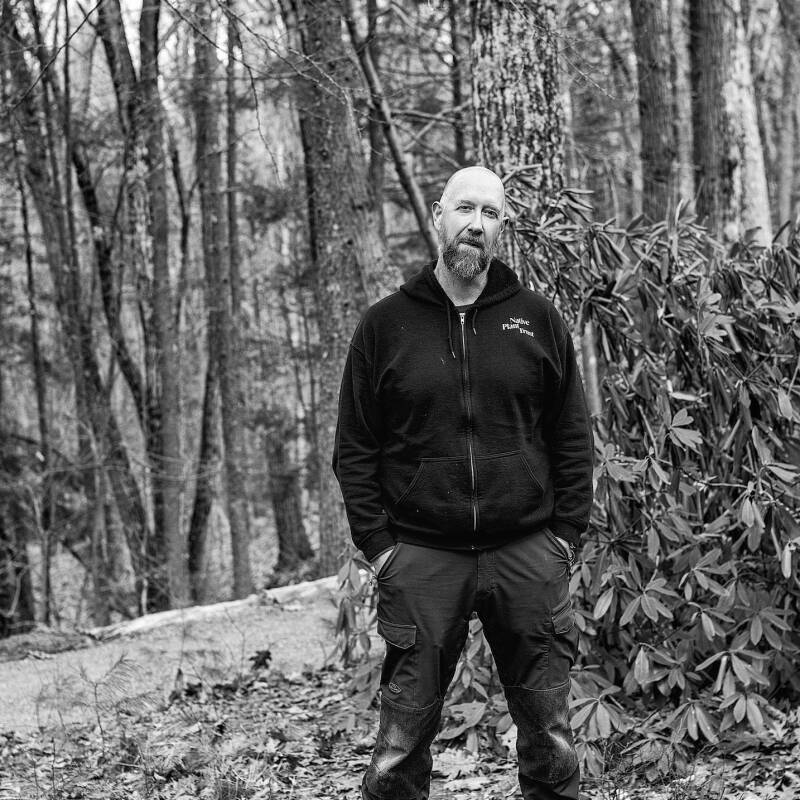Manhattan is a walking city—especially those streets lined with small trees and interesting things growing in window boxes. These are the exception, however, and pounding the streets in summer means just that, with ferocious heat and very little greenery to speak of between Central Park and the High Line. Businesses that use flowers and foliage to adorn their premises tend to be in the wealthier (and greener) areas, spending money on temporary plantings that hold little appeal for a bird or an insect. So it is inspiring to find people like Shanti Nagel, who sees the streets of New York as a potential garden, installing resilient natives that are chosen for their long term benefit.
Photography courtesy of Design Wild.

“We call these tough public plantings ‘Sidewalk Gardens’,” says Shanti Nagel, principal of Design Wild in New York. “We work alongside heavy foot, bus, and dog traffic, homeless populations, and high winds. We are cultivating the beauty of the natural world into unexpected spaces, as stewards of nature.”
As such, she is quick to dispense with the colorfully downbeat language of tree pits and “hell strips” (those unpaved ribbons between the sidewalk and street). “We are actively moving away from the idea that these locations are hellish or ‘pits’. Our work here is about dignity and beauty in the public arena, and by calling them gardens, we and our neighbors honor these landscapes as spaces that are returning to beauty.”

During the redevelopment of Hell’s Kitchen (a name that isn’t going anywhere), Shanti and her team have been planting trees and carving out sizable areas around them for perennial and woody plantings. These are predominantly native and therefore naturally programmed for survival. They have not gone unnoticed by locals: “We absolutely love the feedback from neighbors. My favorite is when someone explains how they have changed their whole pedestrian route through the city—just so they can walk down the blocks where our landscapes live,” says Shanti.
“They tell us that whenever they’re walking to work or school, to the shops or the bus stop, they make sure to walk the blocks with our plantings. And it changes their day. We have always known this power that plants have, and now science has proven it. Studies have shown that it’s the plants and trees that city dwellers see every day that has a profound effect on their mental health, lowering stress levels.
“I know our goldenrod and butterfly weed at the mouth of the Lincoln tunnel change people’s lives in small but profound ways.”

“We love our native plants. My designs are not 100 percent native but closer to 80 to 90 percent. I think this is terrific considering the locations we’re working in,” observes Shanti. “For me, it’s equal parts ecological health and human spirit health, and these plants are healers in both realms. American natives are the ancestors here on this land, even in midtown Manhattan traffic.”

The mainly native, permanent plantings established by Design Wild need less maintenance than conventional bedding flowers that are installed (and uninstalled) on a seasonal basis. They are also subject to a certain amount of experimentation, testing resilience in changing times. “I think that to be truly innovative and successful, especially as the climate changes, we all need to cultivate playfulness, try things, and not be afraid to fail. To push the envelope on plant choices and locations,” says Shanti. She recalls that during the spring of 2020, when public planting came to a halt, Design Wild’s street plantings (with 95 percent perennial plant material), carried on regardless. “The trees and shrubs leafed out, the perennials pushed up new growth. Things flowered; the bees and butterflies showed up.” she recalls. “As other public spaces remained empty with open soil, our plantings continued to flourish without human intervention.”

Cities like New York do not lack resources as much as vision, and an acceptance that worthwhile gardens are an essential part of the big picture. “There is funding for open space, public space infrastructure, and greening projects. We’d like to see more municipalities, community development organizations, property management companies, business improvement districts, and neighborhood groups accessing that funding and investing it in these types of plantings and designs.”
Less funding or funding-awareness puts the onus on the “human element” to keep hustling, through community organizing. “Organizing is a big component of successful landscapes, especially those that do not have full-time paid staff. Over the years we have worked closely with maintenance teams, building supers, and commercial vendors,” observes Shanti. “If you can get human investment into the success of the space you are in good shape!”

“We consider the native plants to be our teachers, elders, and family members, and rely on species such as anise hyssop (Agastache foeniculum), inkberry (Ilex glabra), sweetbay magnolia (Magnolia virginiana), our own native blueberry (Vaccinium corymbosum), switchgrass (Panicum virgatum), goldenrod (Solidago) and so many more.”
See also:
- Apartment Therapy: 11 Garden Ideas to Steal from New York City
- City Sidewalks: A Garden Visit with Ron Finley in South Los Angeles
- 10 Native Alternatives to Invasive Plants












Have a Question or Comment About This Post?
Join the conversation (1)